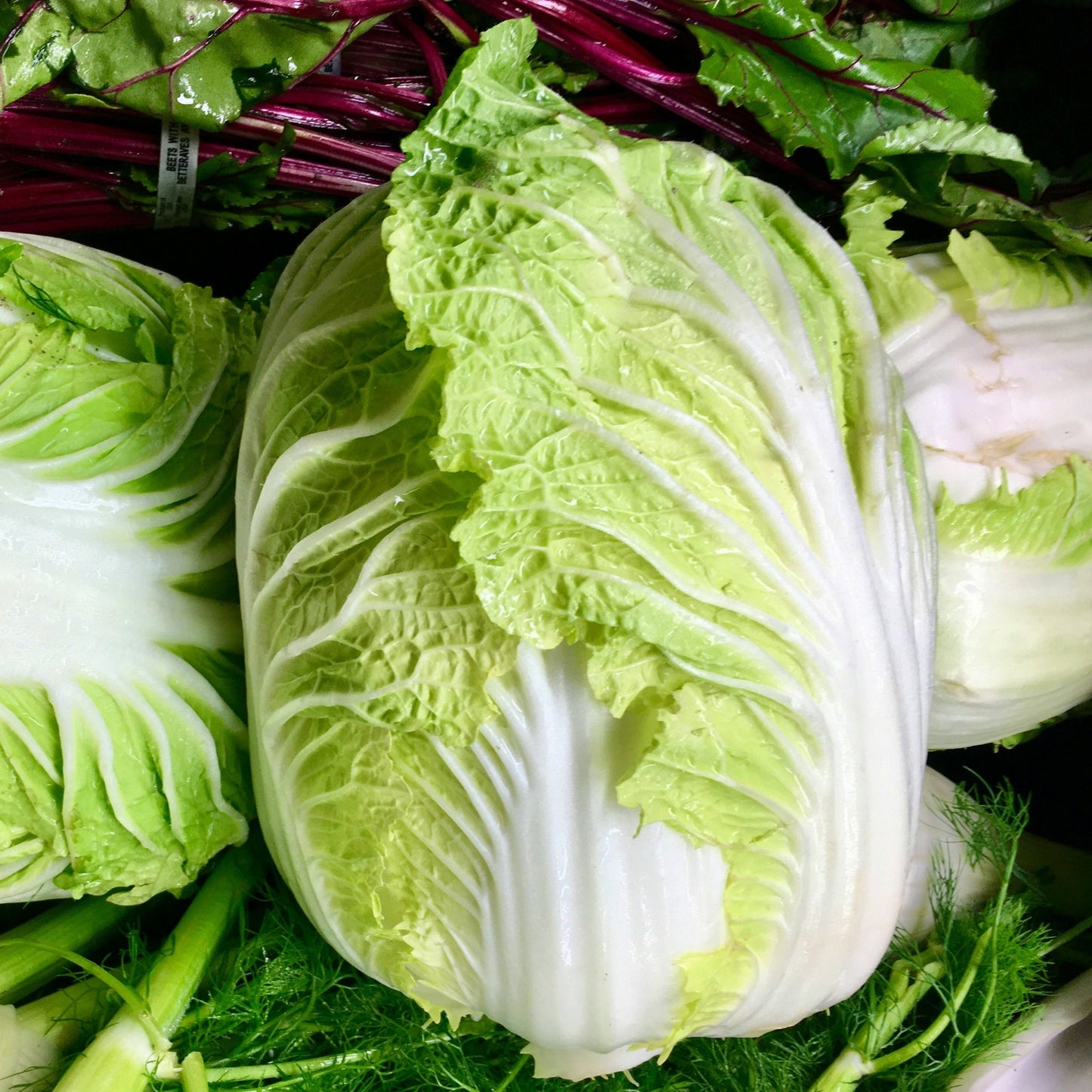JONQUIL
Chinese Michihili Chinese CabbageCabbage - 0.5 Gram
Chinese Michihili Chinese CabbageCabbage - 0.5 Gram
Couldn't load pickup availability
Michihili Chinese Cabbage, also known as Brassica rapa, is a variety of Chinese cabbage prized for its tender, mild-flavoured leaves and crisp, elongated head. It’s an excellent vegetable for stir-fries, soups, and salads, and is commonly used in Asian cuisine. Here’s a guide to sowing and growing Michihili Chinese cabbage. Michihili cabbage forms long, cylindrical heads, with tightly packed, smooth, light green leaves. The heads can grow to be about 30-45 cm long, and the cabbage typically has a mild, sweet flavour. The taste is less pungent than some other cabbage varieties, offering a mild sweetness and a crunchy texture. It’s commonly used for pickling, stir-fries, and soups. The tender leaves can also be used in salads.
Growing Michihili Chinese Cabbage
Location
Sunlight: Choose a spot that receives full sunlight, at least 4-6 hours of direct sun per day.
Temperature: Chinese cabbage prefers cooler weather and grows best in temperatures ranging from 12°C to 20°C. It is typically grown as a spring or fall crop, as it can bolt in hot weather.
Soil
pH: Well-draining soil with a slightly acidic to neutral pH of 6.0-7.5 is ideal.
Fertility: Cabbages are heavy feeders, so use fertile soil rich in organic matter. Incorporate compost or well-rotted manure to improve soil texture and nutrient levels.
Sowing
Direct Sowing: You can sow seeds directly into the garden in early spring, about 2-4 weeks before the last expected frost date. Alternatively, you can sow them in late summer for a fall harvest.
Indoor Sowing: If starting indoors, sow seeds 4-6 weeks before transplanting. Keep them in a well-lit spot and keep a temperature around 18°C until seedlings are large enough to transplant.
Spacing: Plant seeds about 0.5 cm deep and space them 30-45 cm apart to allow ample room for growth. If you’re sowing in rows, keep them 45-60 cm apart.
Watering
Consistent Moisture: Keep the soil evenly moist, especially during germination and early growth. Chinese cabbage has shallow roots and requires regular watering to prevent wilting and stress.
Watering Tips: Avoid overhead watering to prevent disease and keep water at the base of the plants to ensure the leaves stay dry.
Thinning and Care
Thinning: Once seedlings appear and have a few leaves, thin them out to leave the strongest plants, spacing them about 30-45 cm apart.
Weeding: Regularly weed the area to reduce competition for nutrients and water.
Mulching: Apply mulch around the base of the plants to keep moisture, regulate temperature, and suppress weeds.
Fertilization
Chinese cabbage benefits from a balanced fertilizer or compost. Use a low-nitrogen fertilizer to encourage leaf growth without promoting excessive foliage at the expense of the head formation.
Pests & Diseases
Pests: Michihili cabbage is susceptible to pests like aphids, cabbage worms, and flea beetles. Use organic pest control methods like neem oil or row covers to protect young plants.
Diseases: Look out for fungal diseases like downy mildew or powdery mildew. Ensure good air circulation by spacing plants properly and avoid overhead watering.
Harvesting
When to Harvest: Michihili cabbage is usually ready to harvest in about 60-75 days after sowing, depending on growing conditions. Harvest when the heads are firm, cylindrical, and the leaves are tender and crisp.
How to Harvest: Use a sharp knife to cut the cabbage at the base, leaving the root in the ground if you'd like the plant to regrow.
Tips for Success
Succession Planting: To extend your harvest, consider sowing seeds every 2-3 weeks for a continuous supply.
Frost Tolerance: Michihili cabbage is cold-hardy, so it can tolerate light frosts, which can even improve its flavour.
With proper care, Michihili Chinese cabbage will thrive and reward you with tender, flavourful leaves that are perfect for a variety of dishes!
Share


